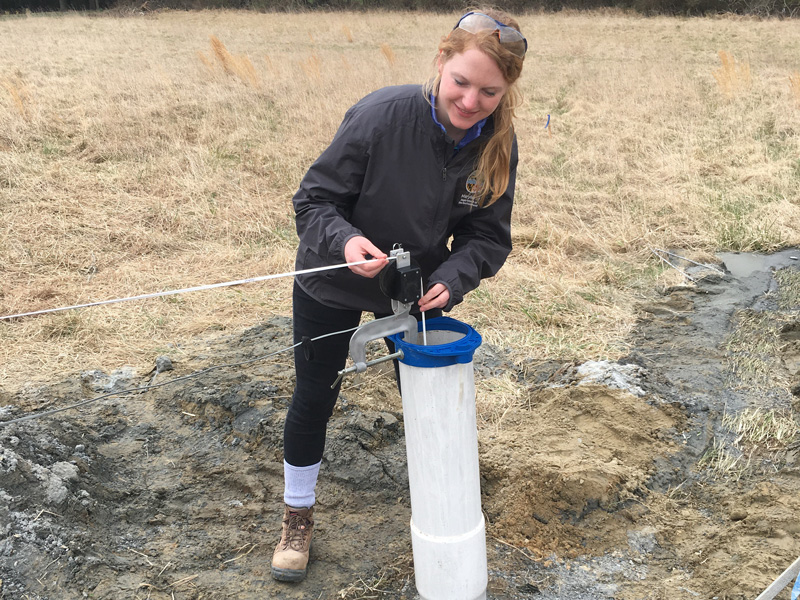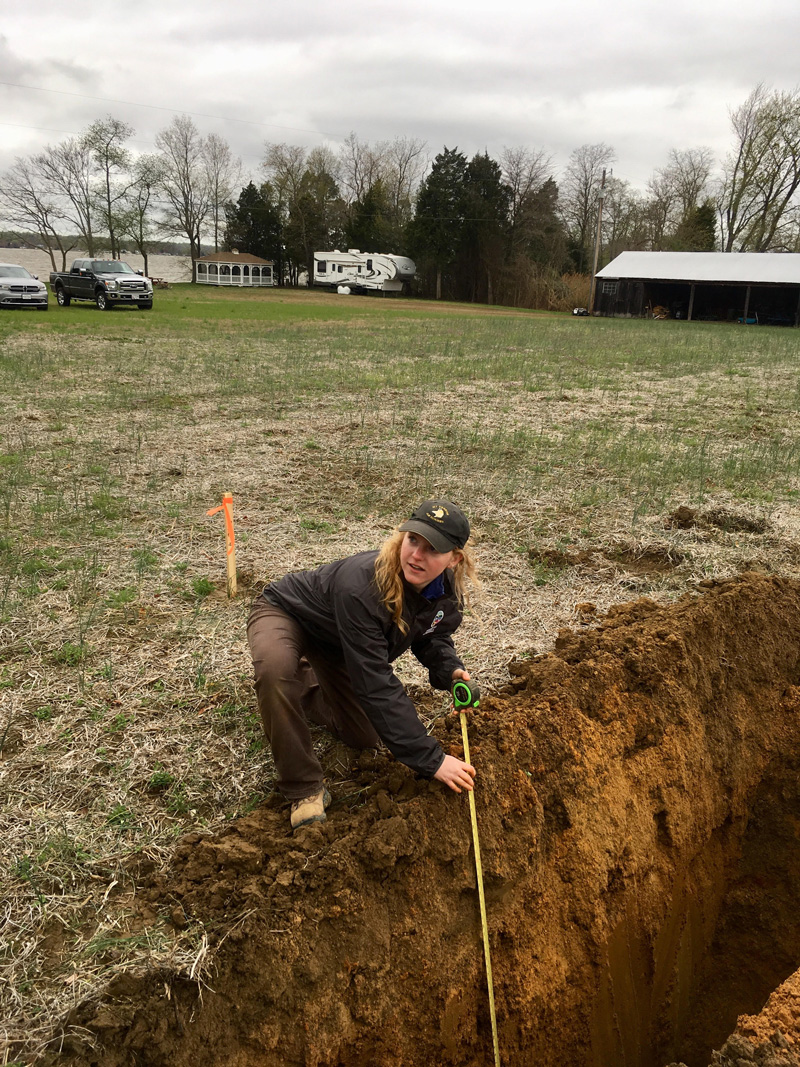


Blue Hen helps the Chesapeake Bay
Photos courtesy of Sara Albrecht May 30, 2018
UD alumna Sara Albrecht works with Maryland Department of the Environment to reduce nitrogen in the bay
When Sara Albrecht graduated from the University of Delaware in 2015 with an honors degree in Natural Resource Management (NRM) from the College of Agriculture and Natural Resources, and followed that up with a master’s in Agricultural and Resource Economics in 2017, she wanted a job that would allow her to implement conservation practices with regards to nature, but do so in a way that would benefit everybody.

Now working with the Maryland Department of the Environment in their On-Site Systems Division as part of the Bay Restoration Fund, Albrecht gets to do just that. She works with members of the local community to upgrade their septic systems to cut down on the amount of nitrogen leaving their systems and entering the Chesapeake Bay.
The state of Maryland has regulations and classifications for the use of Best Available Technology (BAT) for the removal of nitrogen from septic systems. Those regulations include what are known as BAT units, with different types of septic systems cutting a minimum of 50 percent to as much as 76 percent of the nitrogen coming out of homeowners’ septic systems. Albrecht said that her responsibilities include managing the database of the units and working with counties and contractors who do the actual installation, operation and maintenance of the units.
“Some of my work involves being out in the field, which I greatly enjoy,” said Albrecht. “I do inspections of the units to ensure that they’re running properly, and I’m also being trained to do soil and site evaluations to help repair failing systems.”
Along with installing the BAT units, the Bay Restoration Fund also helps farmers plant cover crops. Both of these practices are integral in trying to cut down on the amount of nitrogen entering the Chesapeake Bay, which affects everything from shellfish harvesting and crab populations to swimming and recreational uses for the bay.
“The bay is a precious natural resource whose ecosystems have suffered greatly from pollution,” Albrecht said. “It can sometimes take a long time to see results, but we’re finally starting to see impacts of bay restoration efforts.”
As for her time at UD, Albrecht said that the NRM program suited her perfectly.
“I’ve always loved nature,” she said, “so I knew I was interested in pursuing that. I loved NRM because it’s all about a balance. I feel that when people think of conservation, they can think of it in isolating terms of ‘don’t develop anything’ or ‘develop everything.’ NRM helps show that there can be a compromise between the two that can benefit everyone. That’s what I really like about it.”
Albrecht jokingly admits that she never envisioned going into a career involving septic systems, but she enjoys learning more about them while helping the environment.
“People don’t think about septic systems but they involve really interesting processes,” Albrecht said. “I’m excited to be in this field and I’m excited to be working for the state and the Department of the Environment. I love working here in Baltimore and feeling like I’m giving back to my home state of Maryland.”
Contact Us
Have a UDaily story idea?
Contact us at ocm@udel.edu
Members of the press
Contact us at 302-831-NEWS or visit the Media Relations website

